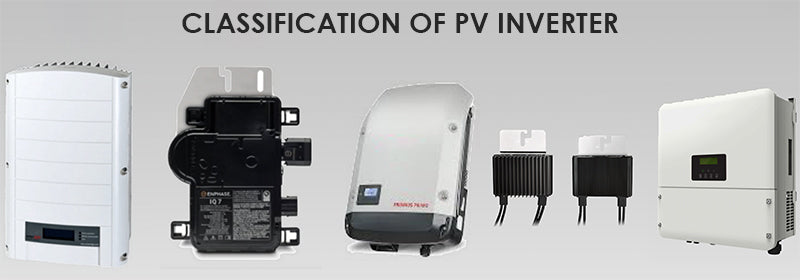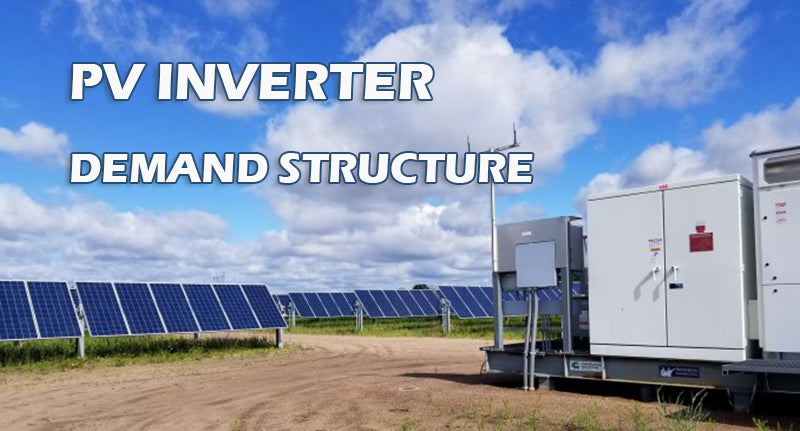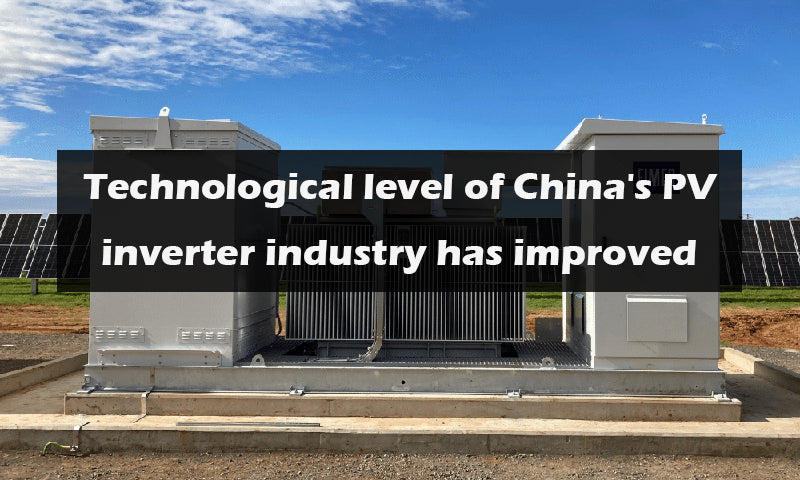
Main content:
As the global carbon neutralization process and home energy storage continue to accelerate, the cost of superimposed photovoltaic power generation continues to decline, the economy continues to improve, and the high growth of photovoltaic installed capacity demand is more certain. This report focuses on the PV inverter segment of the auxiliary material industry chain with a high degree of prosperity.
1. Introduction to PV inverter
PV inverter is the heart of photovoltaic power generation. PV inverters are power electronic conversion devices that connect solar panels to the grid. The main function is to convert the direct current generated by the solar panel into alternating current that can be connected to the grid through the power module. From the perspective of the necessity of PV inverter, the energy generated by photovoltaic arrays is direct current, but the direct current power supply system has great limitations, it is not convenient to convert voltage and the application range of loads is very limited.
The inverter can convert the DC power generated by the panels into the AC power needed for life. From the perspective of the importance of the inverter, the reliability and safety of the inverter are directly related to the smooth operation of the entire solar power generation system. The PV inverter is the brain of photovoltaic power generation. With the continuous improvement of the overall technology of each link of the photovoltaic industry chain and the proposal of the concept of superimposed smart power station, the PV inverter has the function of converting direct current into alternating current.
It also bears the needs of more intelligent applications such as information collection, power station monitoring, and manual interaction. In summary, the PV inverter is the core component of the entire industry chain with extremely intelligent characteristics. It is the only intelligent device in the photovoltaic system that has multiple digital functions and is directly connected to the power grid. It is the brain of the solar photovoltaic power generation system.
2. Classification of PV inverter
PV inverters can be classified according to different dimensions such as technical route, energy storage or not, the number of phases of output AC voltage, and downstream application fields. Specifically,

- According to the technical route, it is divided into centralized inverter, string inverter, distributed inverter and micro inverter;
- According to whether the energy is stored or not, it is divided into photovoltaic grid-connected inverters and energy storage inverters;
- According to the number of phases of the output AC voltage, it is divided into single-phase inverter and three-phase inverter;
- According to the application in grid-connected power generation system or off-grid power generation system, it is divided into grid-connected inverter and off-grid inverter;
- According to the type of photovoltaic power generation applied, it is divided into centralized photovoltaic power generation inverters and distributed photovoltaic power generation inverters.
The difference in the working principle and performance of different types of PV inverter leads to different downstream application fields. Among the above classification standards, the widely used classification method is to distinguish according to the technical route, which is mainly divided into centralized type, string type, distributed type and micro-inverter. Various types of inverters work differently.
In the market, you can see different types of PV inverters according to their usage scenarios, for example, 3000w inverter 12v, 2000w inverter 12v, 1000w pure sine wave inverter, 500 watt car inverter.
3. Photovoltaic power generation drives the development of PV inverter market
The global carbon neutralization process is accelerating, and clean energy is the general trend of the future. The cost of photovoltaic power generation continues to decline, and the economy drives the demand for new installed capacity. The global photovoltaic installed capacity continues to increase, and it is expected that the newly installed capacity will reach 270-330GW in 2025. In the context of the acceleration of global carbon neutrality, the cost of superimposed photovoltaic power generation continues to decline, and the economy continues to improve.

The global installed photovoltaic capacity has increased from 17.5GW in 2010 to 125.8GW in 2020. According to forecasts, in 2025, the new capacity of global photovoltaic installed capacity will reach 270-330GW. In the next few years, in order to achieve carbon peaking and carbon neutrality, the photovoltaic power generation industry will become one of the rapidly developing new energy industries.
It is estimated that during the 14th Five-Year Plan period, the average annual installed photovoltaic capacity of China's photovoltaics will be between 70GW-90GW, and it is further preliminarily estimated that the cumulative installed capacity of China's photovoltaic power generation industry may be between 700GW-850GW by 2027. This will also promote the further growth of China's PV inverter market demand.
4. PV inverter demand structure
Centralized and string inverters are the most important types, and string inverters have gradually become the mainstream. From the perspective of the demand structure of PV inverter, China's PV inverters are mainly centralized and string-type, and the market share of the two is stable at more than 90%. Among them, the market share of string inverters has increased from 32% in 2016 to 67% in 2020, and has gradually become a mainstream type. The main reasons for the increasing penetration rate of string inverters include:
String inverters are mainly used in distributed photovoltaics. Benefiting from the continuous increase in the proportion of distributed photovoltaics, there are more and more companies are actively deploying distributed PV, such as top 5 distributed photovoltaic companies, the proportion of newly installed capacity of distributed photovoltaics in 2021 will exceed that of centralized photovoltaics for the first time. Compared with centralized photovoltaics, distributed photovoltaic power plants have the advantages of small footprint, reduced dependence on grid power supply, flexibility and intelligence, and are the future development trend;
String inverters can also be applied to centralized large-scale power stations, and the economic improvement of string inverters drives their penetration in large-scale power stations. As the power of string inverters continues to increase, the cost continues to decline, and the average price per watt difference from centralized inverters continues to shrink.

In the incremental market, with the continuous updating and iteration of photovoltaic power generation technology in the future, photovoltaic power generation is expected to achieve further penetration in the fields of oxygen production, 5G communication, and construction. The PV inverter will benefit from the expansion of the photovoltaic market and further growth. In the stock market, since the life of the core IGBT components in the PV inverter is 10-15 years, the life expectancy of the components is initially estimated to be 10 years, and the life expectancy of the PV inverter installed during 2012-2017 is about to end in 2022-2027. Expect. The stock replacement market of PV inverter also has great potential for development.
5. Technological level of China's PV inverter industry has improved
The rated output power of a PV inverter refers to the power that can be continuously and stably output for a long time under a certain ambient temperature. According to the China Photovoltaic Industry Association, in the future, with the improvement of the withstand voltage level and current of power switches such as IGBTs and MOSFETs, as well as better heat dissipation materials and designs, the rated power of PV inverter is expected to be further improved.
By 2030, the single-unit power of centralized inverters and distributed inverters will exceed 6000kW/unit, and the single-unit power of string inverters used in centralized power stations will reach 400kW/unit. PV inverter power density refers to the ratio of the rated output power of the inverter to the weight of the inverter equipment itself.

According to the China Photovoltaic Industry Association, in the future, with the upgrade of power electronic devices and the innovation of inverter manufacturers in the inverter structure, the power density of photovoltaic inverters is expected to be further improved. By 2030, the power density of centralized inverters and distributed inverters will exceed 1.6kW/kg, and the power density of string inverters for centralized power stations is expected to reach 3.5kW/kg.
Related articles: Top 10 photovoltaic battery companies, top 5 photovoltaic cell companies in China, top 5 inverter battery companies
















